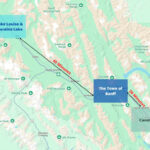Gazing upon the Milky Way band from Earth, highlighting our perspective from within the galactic disk. The ALMA antennas in the foreground emphasize ground-based astronomical observation.
Have you ever looked up at the night sky, far from city lights, and seen a hazy band of light stretching across the darkness? That ethereal glow is our home galaxy, the Milky Way, viewed from within. We, along with our Sun and solar system, are residents of this vast cosmic island. But exactly Where Are We In The Milky Way, and what does our galactic neighborhood look like?
The Milky Way is a galaxy, a colossal family of stars, gas, and dust, all bound together by the relentless force of gravity. Galaxies come in a stunning variety of shapes, from spirals to ellipticals and irregular forms. Our Milky Way is classified as a large barred spiral galaxy, a majestic pinwheel structure swirling through space. Every star we see with the naked eye at night is a member of our own Milky Way family. It earns its poetic name from its appearance as a “milky” band of light in truly dark skies.
Living inside the Milky Way presents a unique challenge for astronomers. Imagine trying to map a forest while standing inside it – it’s hard to get the full picture! Counting stars from our vantage point within the galactic disk is incredibly complex. However, based on extensive observations and calculations, scientists estimate that the Milky Way harbors approximately 100 billion stars. These stars are organized into a vast disk spanning about 100,000 light-years in diameter. Our Solar System resides in the galactic suburbs, situated roughly 25,000 light-years away from the galaxy’s center. Just as Earth orbits the Sun, our Sun and the entire solar system are orbiting the center of the Milky Way. A single revolution around the galactic center takes an astonishing 250 million years – a “cosmic year” for our solar system!
Since we are embedded within the Milky Way, capturing a photograph of the entire galaxy from the outside is impossible for us. So, how do we know it’s a barred spiral galaxy? The evidence comes from piecing together various clues and observations from within.
The most direct clue is that very band of light we see across the sky. This “milky way” itself reveals the galaxy’s flat, disk-like structure. When we look along the plane of the disk, we see a concentration of stars, creating that luminous band. This observation alone tells us our galaxy is fundamentally flat.
Telescopes, both on Earth and in space, have played a crucial role in mapping the Milky Way. Astronomers have painstakingly assembled panoramic images of the galactic disk by taking countless pictures in different directions. Think of it as creating a wide panorama with your smartphone camera. The concentration of stars along this band strongly supports the idea that the Milky Way is a spiral galaxy. If we lived in an elliptical galaxy, the stars would appear more evenly distributed across the sky, not concentrated in a band.
A comprehensive all-sky view of the Milky Way’s flat plane, captured by the DIRBE instrument on COBE. This image vividly demonstrates the galactic disk structure and the concentration of stars.
Further evidence emerges from mapping young, bright stars and clouds of ionized hydrogen within the Milky Way’s disk. These clouds, known as HII regions, are glowing nurseries of star formation, energized by the intense radiation of hot, young stars. HII regions are excellent tracers of spiral arms in other spiral galaxies we observe. By mapping their locations in our own galaxy, astronomers can trace out the spiral structure of the Milky Way. These regions are bright enough to be detected even through the obscuring dust of the galactic disk, except towards the very central region of the galaxy, where density becomes too high.
For years, astronomers debated whether the Milky Way possessed two or four major spiral arms. Current evidence strongly favors a four-armed structure. The image below illustrates an artist’s conception based on the latest data.
An artistic visualization of the Milky Way’s spiral arm structure, derived from observational data of young, massive stars (red) and ionized hydrogen clouds (blue). This representation illustrates our current understanding of the galaxy’s shape.
Additional insights into the Milky Way’s spiral nature come from analyzing dust distribution and the colors of light we receive. These characteristics closely match those observed in other spiral galaxies throughout the universe. Accumulating all these pieces of evidence, astronomers have built a detailed picture of the Milky Way, even without the ability to step outside and take a snapshot.
Beyond our Milky Way, the universe is teeming with billions of other galaxies. Remarkably, just three galaxies beyond our own are visible to the naked eye, appearing as faint, fuzzy patches in the night sky. The closest of these naked-eye galaxies are the Large and Small Magellanic Clouds, satellite galaxies gravitationally bound to the Milky Way. These are best seen from the Southern Hemisphere and are about 160,000 light-years away. From the Northern Hemisphere, under exceptionally dark skies and with keen eyesight, the Andromeda Galaxy can be glimpsed. Andromeda, a spiral galaxy larger than our own, is approximately 2.5 million light-years away. Intriguingly, Andromeda is on a collision course with the Milky Way, predicted to merge in about 4 billion years. Think about that vast distance – it takes light 2.5 million years to travel from even our “nearby” galactic neighbor! The vast majority of other galaxies reside at even greater distances, requiring powerful telescopes to observe.
A stunning Hubble Space Telescope image of the Andromeda galaxy, our closest large galactic neighbor. This image showcases the grandeur of spiral galaxies and our place within the Local Group.
Updated: December 2015

